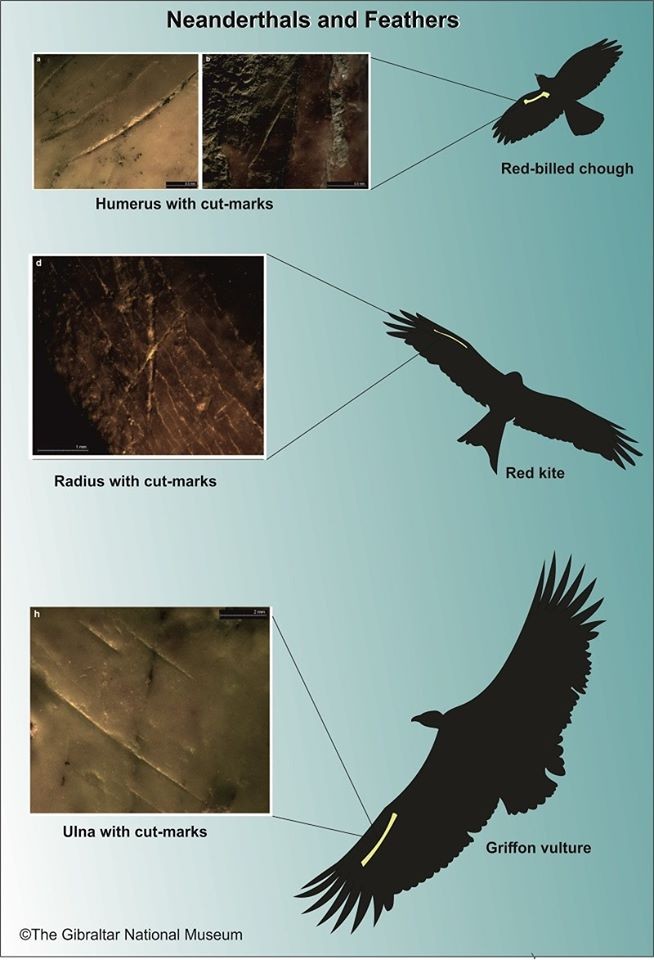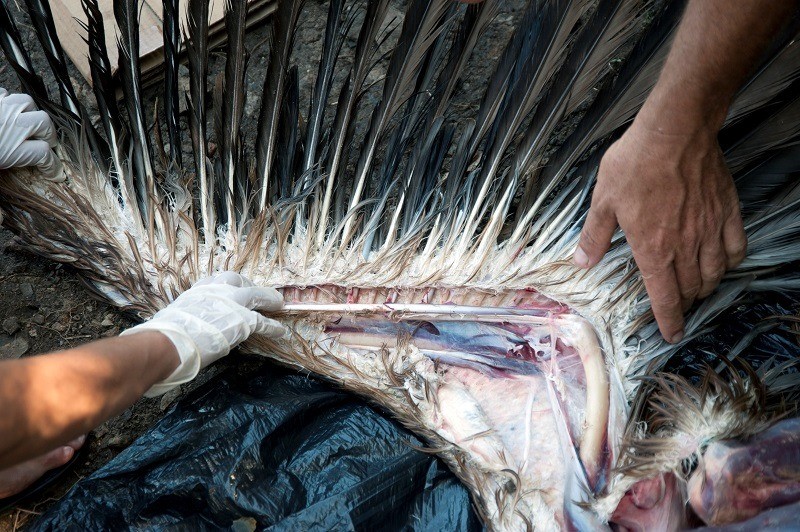taphonomy neanderthals and feathers
Taphonomy Neanderthals and Feathers
Currently one of the most debated issues by Neanderthal experts is their cognitive abilities, and in particular their ability to encode and understand symbolic elements, which until recently has been a trait only attributed to modern humans.
The beginnings of our symbolic behaviour are not always easy to trace. Humans did not start creating large pictorial murals or beautiful stone, ivory or clay statuettes overnight. That is why it is essential to approach this research with an open mind, taking a more precise look at the archaeological record.
This is the topic we will be looking into today – how some otherwise unassuming bird bones have opened up an interesting line of research, with Gibraltar at its centre.
The Gorham’s Cave Complex has 161 bird species in its archaeological record, and is the place with the highest number of bird species in all of Eurasia for the Upper Pleistocene, when the Neanderthals were here.
Within this large number of avian species, which have been identified from the study of their bones, we have detected some with marks clearly showing some form of processing by Neanderthals. The study of these marks is known as taphonomy.
Taphonomy is the analysis of the processes that a bone has undergone following the death of an animal. This can include processes carried out humans, by other animals, or by various environmental processes.
A few years have now passed since cut marks were first detected on various bones from large raptors and corvids, such as vultures, kites and choughs, in Gibraltar – all dark feathered species.
The fact that these cut marks are found on wing bones suggests, that the Neanderthals focused on the extraction of flight feathers using sharp stone tools that accidentally left their mark. These studies indicate that in addition of the extraction of individual feathers, it is very possible that larger raptors were being skinned. The skins, with feathers still attached, could have been worn as a kind of poncho. This has been directly verified via experimental archaeology.
The feathers’ lack of functionality, in so far as protecting oneself from the elements, has led researchers to deduce that they were used for other purposes; perhaps as ornamentation or clothing which would have had carried some symbolism for them.
Ethnographic studies endorse this possibility, as feathers are common elements in symbolic practices. On the other hand, there are several European sites where this behavioural trait has been recorded from 130,000 years ago to the last Neanderthals of Gibraltar. In some of these sites the use of raptor talons as pendants has also been recorded, also expanding the range of raptor species used including what would appear to be a Neanderthal favourite: the Golden Eagle.


Published: April 05, 2020
Other similar VM - Taphonomy
18-20 Bomb House Lane
PO Box 939,
Gibraltar
